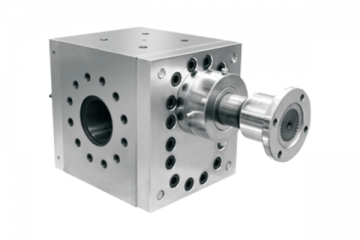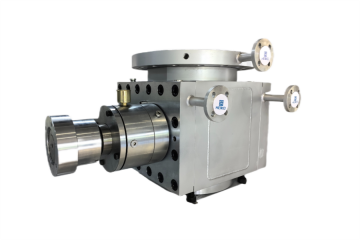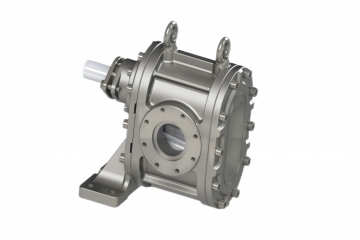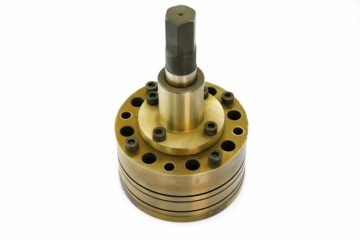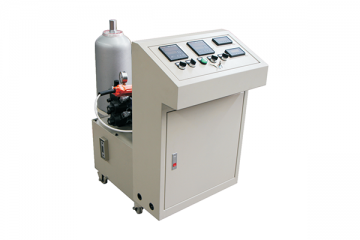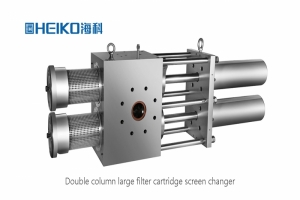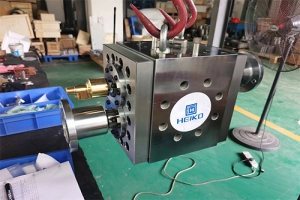In the pipe and sheet industry, the application of hydraulic screen changer has many significant advantages, specifically analyzed as follows:
First, the production continuity guarantee
Non-stop screen changing technology
Hydraulic screen changer through the double-column double runner or four-station design, to realize the screen switching always have screen online work. For example, when replacing a screen in a double-column screen changer, one screen works and the other is replaced synchronously to ensure that the melt flow is not interrupted; while in a four-station backwash screen changer, three screens are still on-line when the screen is being changed through the simultaneous operation of four screens, with minimal pressure fluctuations. This technology allows for a significant increase in the continuous running time of the production line and reduces the loss of production due to downtime for screen changes, which is particularly suited to the production of tubes and sheets with high throughput and long cycle times.
Rapid Screen Change Capability
Hydraulic system driven screen changes can be accomplished in 0.3-1 seconds (e.g. sheet veneer hydraulic screen changer), much faster than traditional manual screen changes. Fast switching reduces melt retention time, avoiding material degradation, while maintaining the stability of the production rhythm.
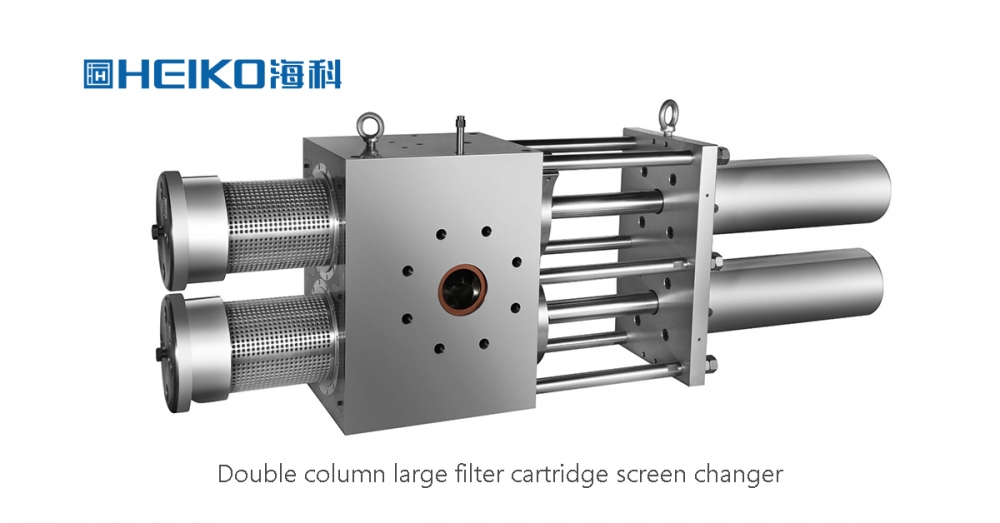
Second. Improved product quality
Highly efficient filtration of impurities
Hydraulic screen changers are equipped with high-precision filters (e.g. 120 mesh filtration accuracy), which effectively intercept impurities, unmelted particles and foreign objects in the plastic melt. For example, in the production of PET sheet, the filtration accuracy reaches 125μm, which significantly improves the surface finish of the product; in the production of medical grade PP sheet, the aseptic design of the screen changer chamber ensures compliance with hygienic standards.
Optimized plasticization and homogenization
screen changers promote full plasticization and homogenization of raw materials by increasing the back pressure in the head. For example, in PVC sheet extrusion, the screen changer makes the melt flow more uniformly across the cross-section, avoiding defects such as “tangles” and improving the mechanical properties and compression resistance of the product.
Stabilized flow and dimensional accuracy
Continuous filtration and stabilized pressure control ensure uniform melt transport and higher dimensional accuracy of pipe and sheet. For example, the double-column screen changer has no fluctuation of material flow and no deformation of products during the screen changing process, which meets the demand of high-precision pipe production.
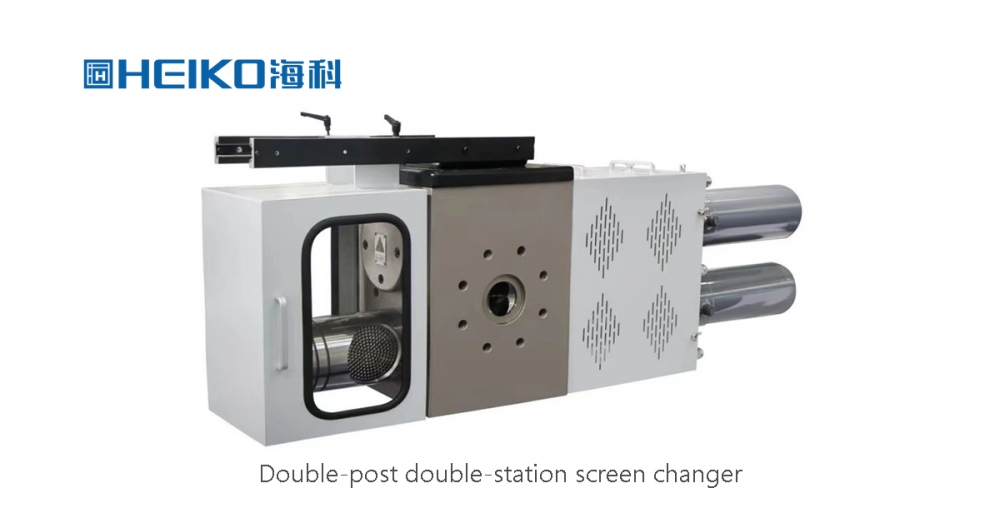
Third. Production efficiency and cost optimization
Reduced scrap rate
Hydraulic screen changer reduces the scrap rate caused by impurities through efficient filtration and stable production. For example, in granulation production, the screen can be used repeatedly (e.g., backwash function), reducing the frequency of screen replacement and further saving costs.
Energy Saving and Consumption Reduction
The non-stop screen changing technology avoids the energy consumption required to frequently start and stop the production line, while the optimization of the hydraulic system (e.g., servo motor-driven pumps) reduces the energy consumption by more than 40%, which is in line with the trend of green manufacturing.
Reduce labor intensity
The automated control system (e.g. PLC+HMI) supports timed, fixed-pressure or manual screen changing modes, and the operator only needs to monitor the parameters through the touch screen, which reduces manual intervention and physical labor.
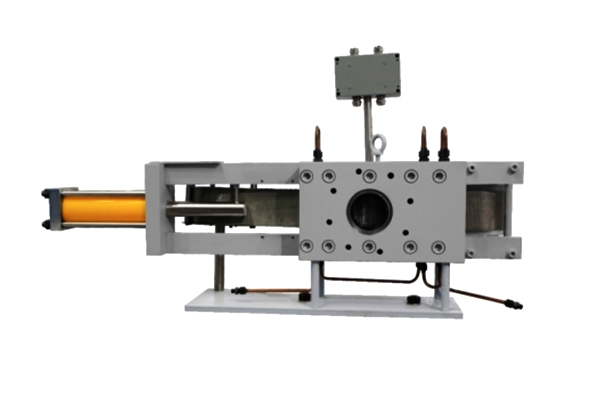
Fourth, equipment adaptability and compatibility
Multi-material applicability
Hydraulic screen changer can handle a wide range of plastic materials such as PP, PE, ABS, PS, PC, PVC, etc., and it is even suitable for glass fiber-containing materials, high-viscosity engineering plastics and other special materials. For example, the life of tungsten steel wear-resistant stencils is increased by 3 times in the processing of glass fiber-containing materials.
Multi-Equipment Compatibility
Hydraulic screen changer can be used with various types of extruders, film blowing machines and other equipment, with strong compatibility. For example, the plate type hydraulic screen changer is especially suitable for pipe production lines with high material flow pressure due to its short runner and high pressure resistance.
Fifth. Intelligent and maintenance convenience
Intelligent monitoring and diagnosis
Modern hydraulic screen changer integrates more than 20 parameters monitoring (such as pressure, temperature, displacement), supports data storage and remote diagnosis, which can warn the equipment failure in advance and reduce unplanned downtime.
Modular design and easy maintenance
The equipment adopts the design of double-guide support and nano-scale mirror-polished runner, which makes screen replacement and cleaning more convenient. For example, the double-plate screen changer quickly switches stations through hydraulic devices, reducing maintenance time to 1/3 of traditional equipment.

The hydraulic screen changer has become a key equipment for the pipe and sheet industry to improve efficiency, guarantee quality and reduce costs through its core technical advantages of non-stop screen changing, high-efficiency filtration, stable production, energy-saving and consumption reduction, and intelligent monitoring. Its application scenario covers high-end sheet (such as PET, PC light diffusion board), special material processing (such as glass fiber-containing, medical-grade materials) and high-output pipe production line, which is an important direction for the technological upgrading of the modern plastics processing industry.






